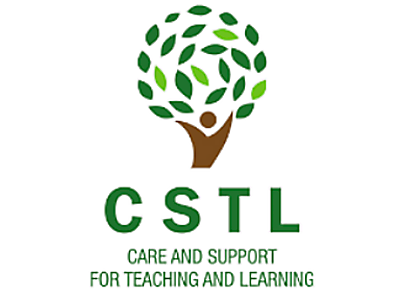Building resilience in boys and young men in the SADC Region | MIET AFRICA celebrates the ministarial approval of the SADC Boys’ and Young Men’s Vulnerability Framework
Posted by Letswalo L Marobane on 15 September 2023, 11:45 SAST


Exciting news for the FutureLife-Now! community and all those with a stake in gender equality in the education sector! At their annual meeting held this year in June in the Democratic Republic of Congo, the Southern African Development Community (SADC) Ministers of Education adopted the SADC Boys’ and Young Men’s Vulnerability Framework as an addendum to the Care and Support for Teaching and Learning Policy Framework (CSTL PF).
The Boys’ and Young Men’s Vulnerability Framework is a comprehensive planning framework that supports the Member States of SADC to implement interventions to achieve gender equality through the provision of prevention, protection and support services for boys and young men. Its development was informed by a regional study on boys’ vulnerability that was commissioned in 2019. The study found that there is an urgent need to strengthen the engagement of boys and young men to support gender equality and female empowerment, as well as to address their own specific social, emotional and development needs.
Despite a growing awareness among SADC Member States about the need to involve and support boys, the reality is that boys and young men are seldom targeted in education or health programming. Currently, boys seem to be involved almost exclusively in “male engagement” strategies for social norms transformation, rather than as direct beneficiaries of holistic programmes. Instead, the study recommended that boys and young men should be involved not just as agents of change to bring about gender equality, but rather, their specific health and developmental needs should also be targeted.
By 2050 Africa will be home to a billion children; it is therefore essential that education systems be strengthened to accelerate sustainable progress for all young people, including boys and young men. The Boys’ and Young Men’s Vulnerability Framework recognises that adolescence is a critical stage of development, during which children experience rapid social, physical, psychological and emotional change as they transition from childhood to adulthood. During this unsettled period, boys and young men face dangers such as early fatherhood and child marriage, are at higher risk of dropping out of school and are more prone to risk-taking behaviour, thereby acquiring various sexually transmitted infections, including HIV&AIDS; they are also prone to alcohol and substance abuse. Furthermore, SADC Member States have also been recording high numbers of boys and young men experiencing mental health and psychosocial challenges, including suicide and depression. All these factors decrease the opportunities adolescent boys and young men have and they jeopardise their future. Exacerbating this, the region is hampered by a substantial lack of contextually-appropriate and youth-focused mental health and psychosocial services.
The Boys’ and Young Men’s Vulnerability Framework provides a strong evidence base of boys’ and young men’s education, health, human rights, information and socioeconomic vulnerabilities that impede 21st century learning and overall human development, as envisaged by the CSTL PF and the Child and Youth Agency Framework. The Boys’ and Young Men’s Vulnerability Framework provides key strategic pillars to secure commitment among SADC Member States and their Ministries of Education so that the needs and vulnerabilities of boys and young men are also prioritised within the education system and curriculums. Furthermore, the framework provides Member States with practical guidance on education and social sector reform aimed at strengthening available services for boys and young men as part of achieving gender equality and equity, while ensuring that Ministries of Education and Health and related ministries have a guide for addressing the specific risks that boys and young men face.
Therefore, to achieve gender equality and to address the vulnerabilities of boys and young men, the framework advocates for schools to provide a basic package of services, and where possible, provide appropriate information and referrals to other health and social services. This means that identified services must be made accessible within the education system.
The Boys’ and Young Men’s Vulnerability Framework requires the development of a caring and supportive teaching and learning environment where the CSTL pillars, as described in the CSTL PF, are implemented to enable, and empower every learner, including vulnerable boys, to receive tailored and supportive services and interventions that support their retention, transition and school completion.
In the framework, practical guidance is provided across five focus areas: curriculum-based programming; increased access to age-appropriate support and services (with a focus on school–health linkages); using a whole-school approach to address gendered social norms and practices; creating an enabling legal and policy environment for addressing unequal gender practices; building partnerships for ensuring a continuum of care and support for both boys and girls. The framework also includes a gender-equality marker that will help Member States to assess the extent to which national education, health and social protection programmes address the structural gender differences boys and girls face when accessing services (education and other).
The approval of the Boys’ and Young Men’s Vulnerability Framework is an important milestone in the policy landscape within SADC: Member States are now required to contextualise and harmonise their laws and policies related to boys’ programming to the framework. And currently, the Ministries of Education in Lesotho, Malawi, Zambia and Zimbabwe are developing their own national boys’ vulnerability frameworks, borrowing heavily from the Boys’ and Young Men’s Vulnerability Framework. It is anticipated that more Member States will develop their national frameworks, in support of accelerating global, continental and sub-regional commitments—including the Sustainable Development Goals (Goals 4 and 5), AU Agenda 2063: The Africa we want and AU Agenda 2040—towards the achievement of gender equality.
